Şaziye Betül Özateş
Department of Computer Engineering Boğaziçi University
Building Foundations for Natural Language Processing of Historical Turkish: Resources and Models
Jan 08, 2025Abstract:This paper introduces foundational resources and models for natural language processing (NLP) of historical Turkish, a domain that has remained underexplored in computational linguistics. We present the first named entity recognition (NER) dataset, HisTR and the first Universal Dependencies treebank, OTA-BOUN for a historical form of the Turkish language along with transformer-based models trained using these datasets for named entity recognition, dependency parsing, and part-of-speech tagging tasks. Additionally, we introduce Ottoman Text Corpus (OTC), a clean corpus of transliterated historical Turkish texts that spans a wide range of historical periods. Our experimental results show significant improvements in the computational analysis of historical Turkish, achieving promising results in tasks that require understanding of historical linguistic structures. They also highlight existing challenges, such as domain adaptation and language variations across time periods. All of the presented resources and models are made available at https://huggingface.co/bucolin to serve as a benchmark for future progress in historical Turkish NLP.
Dependency Annotation of Ottoman Turkish with Multilingual BERT
Feb 22, 2024Abstract:This study introduces a pretrained large language model-based annotation methodology for the first dependency treebank in Ottoman Turkish. Our experimental results show that, iteratively, i) pseudo-annotating data using a multilingual BERT-based parsing model, ii) manually correcting the pseudo-annotations, and iii) fine-tuning the parsing model with the corrected annotations, we speed up and simplify the challenging dependency annotation process. The resulting treebank, that will be a part of the Universal Dependencies (UD) project, will facilitate automated analysis of Ottoman Turkish documents, unlocking the linguistic richness embedded in this historical heritage.
Enhancements to the BOUN Treebank Reflecting the Agglutinative Nature of Turkish
Jul 24, 2022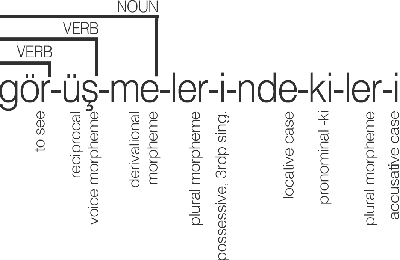

Abstract:In this study, we aim to offer linguistically motivated solutions to resolve the issues of the lack of representation of null morphemes, highly productive derivational processes, and syncretic morphemes of Turkish in the BOUN Treebank without diverging from the Universal Dependencies framework. In order to tackle these issues, new annotation conventions were introduced by splitting certain lemmas and employing the MISC (miscellaneous) tab in the UD framework to denote derivation. Representational capabilities of the re-annotated treebank were tested on a LSTM-based dependency parser and an updated version of the BoAT Tool is introduced.
Resources for Turkish Dependency Parsing: Introducing the BOUN Treebank and the BoAT Annotation Tool
Feb 24, 2020



Abstract:In this paper, we describe our contributions and efforts to develop Turkish resources, which include a new treebank (BOUN Treebank) with novel sentences, along with the guidelines we adopted and a new annotation tool we developed (BoAT). The manual annotation process we employed was shaped and implemented by a team of four linguists and five NLP specialists. Decisions regarding the annotation of the BOUN Treebank were made in line with the Universal Dependencies framework, which originated from the works of De Marneffe et al. (2014) and Nivre et al. (2016). We took into account the recent unifying efforts based on the re-annotation of other Turkish treebanks in the UD framework (T\"urk et al., 2019). Through the BOUN Treebank, we introduced a total of 9,757 sentences from various topics including biographical texts, national newspapers, instructional texts, popular culture articles, and essays. In addition, we report the parsing results of a graph-based dependency parser obtained over each text type, the total of the BOUN Treebank, and all Turkish treebanks that we either re-annotated or introduced. We show that a state-of-the-art dependency parser has improved scores for identifying the proper head and the syntactic relationships between the heads and the dependents. In light of these results, we have observed that the unification of the Turkish annotation scheme and introducing a more comprehensive treebank improves performance with regards to dependency parsing
A Hybrid Approach to Dependency Parsing: Combining Rules and Morphology with Deep Learning
Feb 24, 2020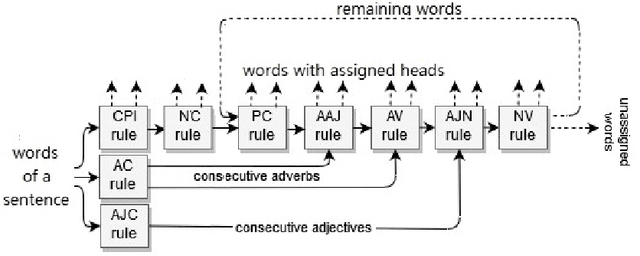
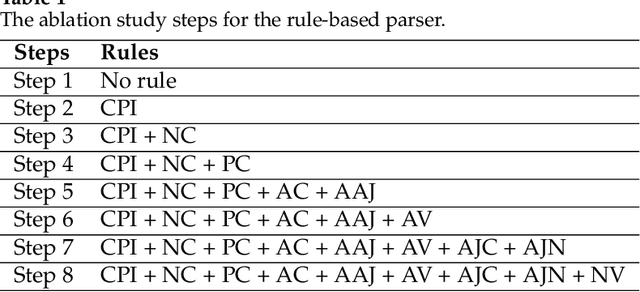
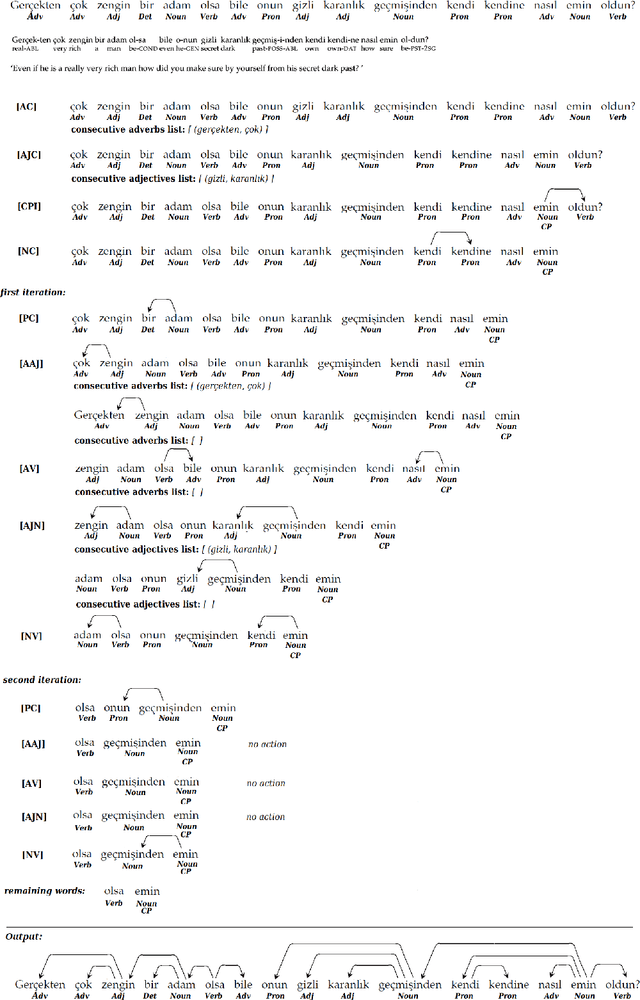
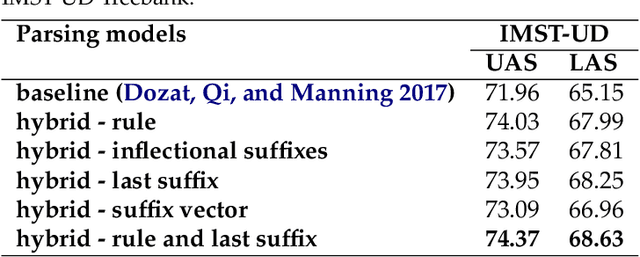
Abstract:Fully data-driven, deep learning-based models are usually designed as language-independent and have been shown to be successful for many natural language processing tasks. However, when the studied language is low-resourced and the amount of training data is insufficient, these models can benefit from the integration of natural language grammar-based information. We propose two approaches to dependency parsing especially for languages with restricted amount of training data. Our first approach combines a state-of-the-art deep learning-based parser with a rule-based approach and the second one incorporates morphological information into the parser. In the rule-based approach, the parsing decisions made by the rules are encoded and concatenated with the vector representations of the input words as additional information to the deep network. The morphology-based approach proposes different methods to include the morphological structure of words into the parser network. Experiments are conducted on the IMST-UD Treebank and the results suggest that integration of explicit knowledge about the target language to a neural parser through a rule-based parsing system and morphological analysis leads to more accurate annotations and hence, increases the parsing performance in terms of attachment scores. The proposed methods are developed for Turkish, but can be adapted to other languages as well.
 Add to Chrome
Add to Chrome Add to Firefox
Add to Firefox Add to Edge
Add to Edge